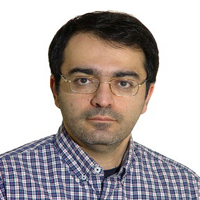Optimizing the layout of facilities in a dynamic cellular manufacturing system based on the amount of energy consumption and the work environment safety considering operator allocation
The design of facility layout and production planning accordingly is significantly important in the manufacturing industries. This type of design in traditional units is mainly based on the lowest cost of moving materials and effective environmental indicators, and social factors are ignored in the planning and design of facility layout; Therefore, usually, the arrangement does not match the human capacity, the intensity of the employees' work is not scientific and it causes a lot of damage to the physical and mental health of the employees for a long time. Considering the importance of the mentioned items, paying attention to biological issues such as energy, which is one of the main concerns of the country, and social issues, such as the safety of the operator's work environment, which is followed by governmental and non-governmental associations, can be considered a positive and new step in the layout design.
Design/methodology/approach:
In this paper, a multi-objective mathematical programming model has been developed in a dynamic cellular manufacturing system, taking into account the minimization of the costs of moving and rearranging the facilities, the minimization of the risks of the work environment (the potential risk of placing machinery in a certain place), and the consumption of electrical energy in product production operations. To make the model closer to reality, other issues related to the production environment such as hiring and firing operators in each period, training, wages and their allocation are also included in the model. The proposed model is solved by designing samples in different dimensions, applying the epsilon constraint method and meta-heuristic algorithm NSGA-II and MOPSO, using performance indicators, and associated comparison and analysis by T-test.
Performance indices (spacing metric, diversification metric, mean ideal distance, CPU time) in solution methods were calculated and compared based on information inspired by the subject literature and the design of 15 problems with different dimensions. The results indicated that the quality of the solutions obtained from the NSGA-II algorithm was better than other methods and in terms of the solution time, the solution was reached at least two times earlier than the epsilon constraint method.
Research limitations/implications:
For future studies, it is suggested to investigate the performance of other meta-heuristic algorithms to solve the proposed model; Also, the combination of other real-world industrial factors such as financial and energy resource limitations, facility idle time, and unequal facility dimensions can be considerably valuable for future research. In addition, the uncertainty of the parameters, which is one of the main and practical issues in the real world, can be added to the model in terms of demand or processing time.
Practical implications:
The dynamic cellular manufacturing system is one of the well-known manufacturing systems that provides the possibility of increasing the level of reactivity, flexibility and agility in production to compete in the market, but with the growth of industrial development and the increasing attention of societies to the amount of energy consumption and the conditions of employees in production with a new challenge. It has been faced in such a way that it should include sustainability issues from the very beginning and in the design of the facility layout. The proposed model has provided a stable, dynamic and optimal layout by creating a balance between the dimensions of sustainability (cost, energy and layout safety) in manufacturing industries.
Social implications:
Ignoring social issues and mismanagement of human resources has resulted in unforeseen costs for manufacturing companies. This study attempts to propose a model that is closer to reality and provides a more accurate and safe arrangement by considering various dimensions of human resource management in production, such as hiring, firing, training, wages, and allocation, which are effective tools for decision-making in organizations, alongside workplace safety.
Originality/value:
In this paper, a nonlinear mixed integer programming model is proposed for the facility layout problem in a dynamic and sustainable cellular space. In this model, the amount of energy consumption, which is one of the main issues that manufacturing industries deal with, has been addressed and has helped industries in improving their performance. Two approaches have been proposed for this issue. The amount of energy used to move the machines and the amount of energy used in processing each part/product based on the selection of the best route. In this model, the best production route is selected in such a way that, in addition to reducing production costs, energy consumption in moving parts and processing each operation should be reduced.
-
Designing a Dynamic and Sustainable Cellular Manufacturing System by Considering the Amount of Energy Consumption and Manpower in Production Planning
Nader Ghanei, Gholam Reza Esmaeilian *,
Journal of Modeling in Engineering, -
A Novel Optimization Model for Pricing-based Energy Management in a Peer-to-Peer (P2P) Electricity Market
Maliheh Masoumi, *
Journal of sustainable Energy Systems, -
Investigating the Impact of Blockchain Technology Adoption on Integration and Economic Sustainability of the Automotive Supply Chain: a Bayesian Structural Equation Modeling Approach
, Sedigheh Rezaiyan Fardoie, Mansoureh Hourali, Ebrahim Farbod*
Transactions on Quantitative Finance and Beyond, Winter and Spring 2024



